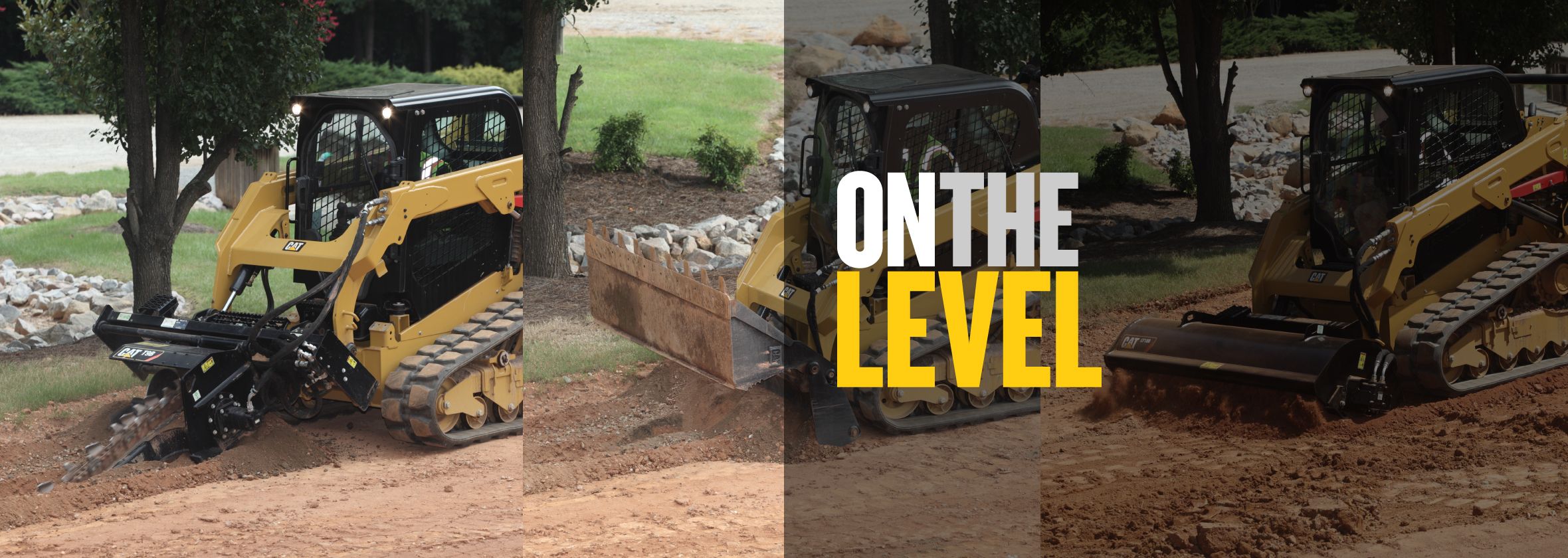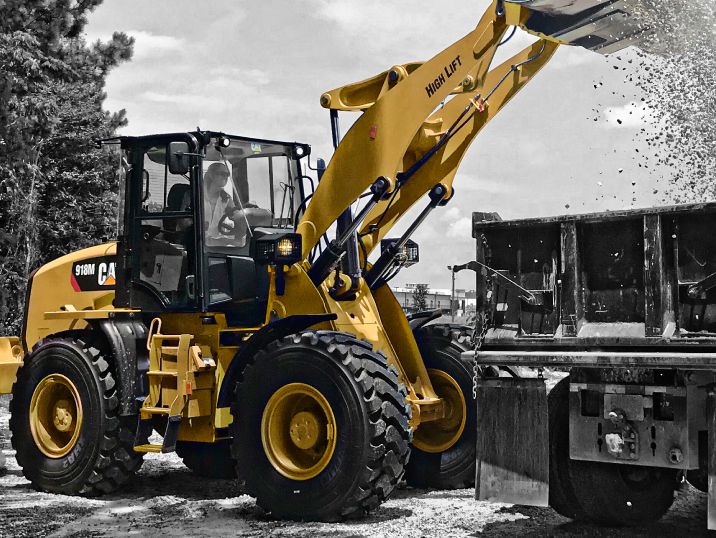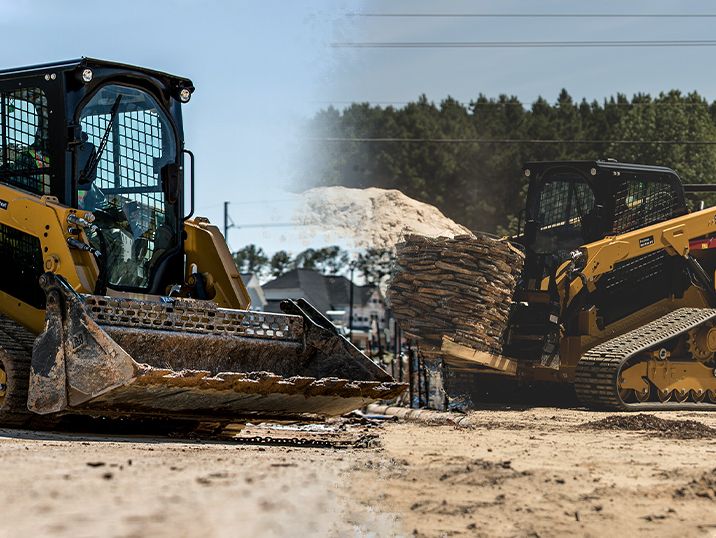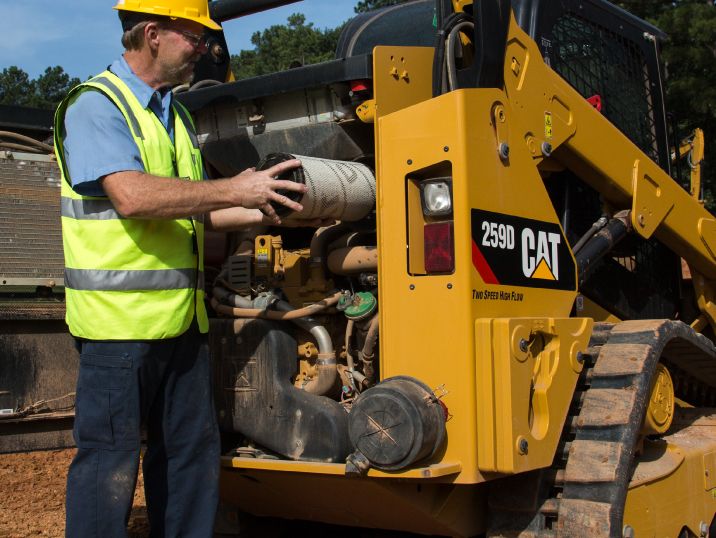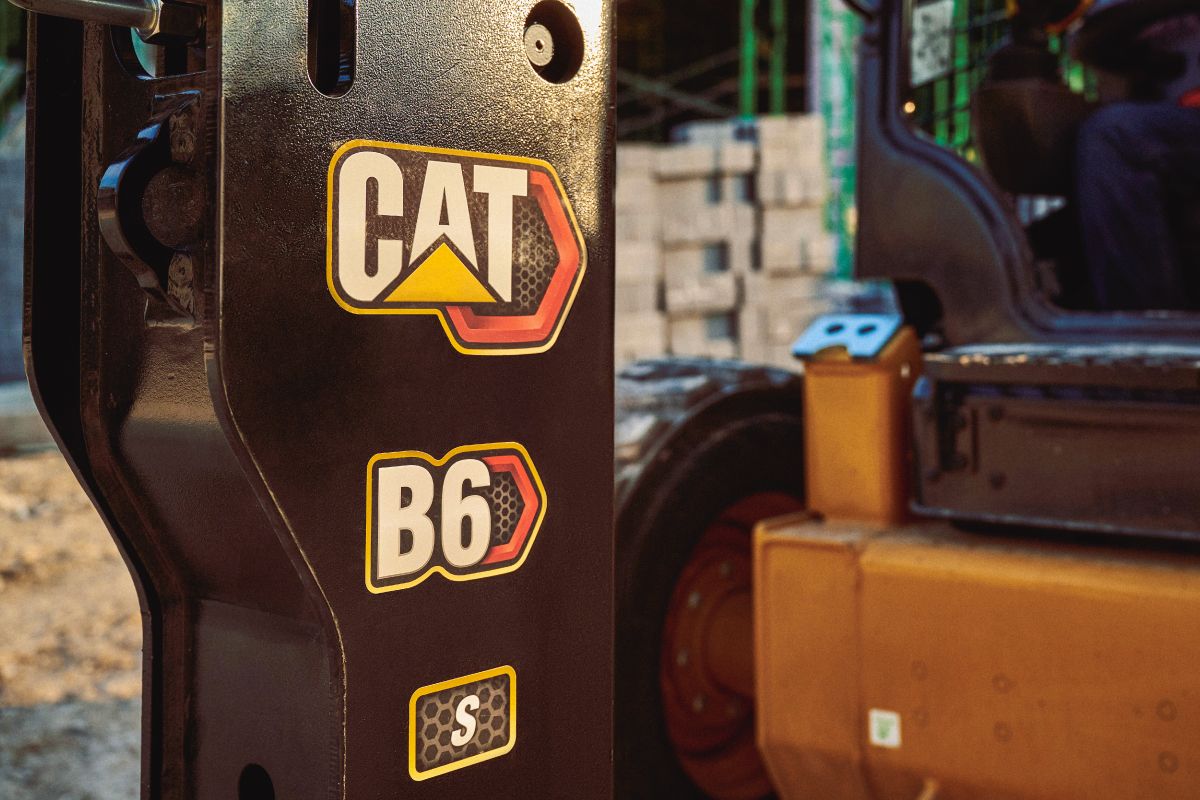

Sign In
Welcome! Sign In to personalize your Cat.com experience
If you already have an existing account with another Cat App, you can use the same account to sign in here
Register Now
One Account. All of Cat.
Your Caterpillar account is the single account you use to log in to select services and applications we offer. Shop for parts and machines online, manage your fleet, go mobile, and more.
Account Information
Site Settings
Security
Work Capacity for Compact Loaders
Dani Watson | Construction Marketing Consultant
Today’s advanced compact loaders are helping contractors further increase their workload capacity by performing a diverse set of tasks in an efficient manner. From innovations in equipment design to advancements in machine operating software, there is a range of options available to enable you to bid on the jobs you want and get the most out of your machine. We caught up with our compact track loaders product group to learn more.
Utilize Attachments to Tackle Numerous Tasks with One Machine
A common concern throughout the industry is having the capacity to complete a variety of tasks with a limited number of machines. With the right attachments, a single piece of equipment can carry out tasks that would normally require multiple machines. Today’s advanced attachments can help you carry out all phases of a construction project, from site prep to clean-up.
Application |
Relevant Attachments |
Capabilities |
Site Prep |
Brushcutter Mulcher Grapple bucket Grapple rake Stump grinder |
Mowing, mulching, moving material and grinding stumps |
Flatwork and Foundation |
Bucket Hammer Pallet fork Blade Drum compactor |
Smoothing dirt, spreading gravel and transporting palletized cinder block |
Structure and Utilities |
Bucket Pallet fork Trencher Backhoe |
Moving structural materials, trenching, digging for underground utilities |
Landscape |
Pallet fork Auger Power box rake Landscape rake Landscape tiller |
Leveling dirt, removing rock, setting sod, planting trees |
Clean-Up |
Angle broom Utility broom Bucket Grapple bucket |
Sweeping and collecting debris, dumping scrap material |
Performance Matching Your Machine and Attachments
Without a doubt, you are going to get the greatest productivity out of your machine and attachments when the equipment is performance matched. To performance match your equipment, it is recommended to use attachments engineered by the same manufacturer as your machine because the tools are specifically designed to fit and maximize performance on the manufacturer’s compact loaders.
Additionally, it’s a good idea to consider features that are designed to increase efficiency and ease-of-use for the operator. For example:
- Return-to-dig and work tool positioners allow operators to pre-set the attachment angle and automatically recall that setting when requested. This helps create easier loading cycles, reduce cycle times, and judge proper depth and back drag angles.
- Electronic dual self-leveling helps keep the attachment level and prevents it from tilting forward when lowering the lift arms. Without this feature, operators would have to manually adjust the work tool angle each time they lower the lift arms and attachment.
- Creep mode gives operators the ability to adjust ground speed independent of engine speed. Traveling at a slow ground speed with full engine horsepower and hydraulic flow is especially useful for rotary tool applications such as trenching and brush cutting.
- A high hydraulic flow and high pressure option comes in handy when you are working with attachments that require both speed and torque to maximize performance and production, such as mulchers and cold planers.
- Electronic couplers allow operators to change out attachments using controls from within the cab and in a shorter amount of time than with manual couplers.
Advancements in Machine Control Pattern Options
Since different operators have different control pattern preferences, it’s good to know that some manufacturers offer more than one control pattern option for their compact machines. Today’s control pattern options include:
- ISO pattern controls which employ one hand drive and one hand operation of the implements.
- H-pattern controls which employ two hand drive and two hand operation of the implements.
- Hand and foot controls which employ two hand drive and two foot operation of the implements.
Advanced control features let you customize the controls to your preference, allowing you to tailor the drive and implement response to your experience level or task. Additionally, advancements in joystick controls inside the cab are helping to improve operator comfort and reduce fatigue.
Cab Design that Increases Operator Comfort and Safety
Operators are often exposed to potentially harmful particles in the air on the job site. Fully sealed and pressurized cabs can help minimize inhalation of particles and dust that mix in with the air during everyday operations. Sealed cabs are also quieter, which allows operators to focus on the tasks at hand and reduces their fatigue at the end of a long day.
These cabs are designed to improve visibility. Rearview cameras with in-cab display are now being installed in newer model compact loaders—allowing operators to be fully aware of their 360-degree surroundings without having to turn their head.

DANI WATSON
Construction Marketing Consultant
Certified in 6 Sigma Black Belt and Change Management, Dani Watson not only helps manage projects efficiently within Caterpillar, but is an expert communications strategist for Caterpillar’s marketing communications needs.
RELATED ARTICLES
You’re here to get ideas to grow your business. Read on for machine insights and expert tips and tricks to get more out of every job.
-
How to Choose the Right Track for Your Compact Track Loader
That rubber track on your compact track loader has a specific purpose, and it’s important to choose the right tread for the job. We're here to help you make the right choice.
Learn More -
Uptime Tips for Compact Track Loaders
Get the most uptime and productivity from your Cat compact track loader with the tips from our blog.
Learn More -
Attachment Maintenance
Get tips and tricks on attachment maintenance, so you can get longer product life, productivity and efficiency out of your work tools.
Learn More -
Construction Business Tips
It’s important to prepare your construction business for whatever the future may bring, especially in times like this. Our team has gathered some business tips and resources to help you navigate this year and beyond.
Learn More
